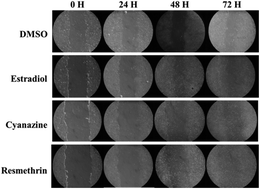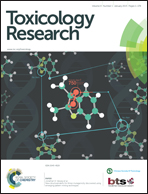Failure of pesticides to alter migration of cancerous and non-cancerous breast cell lines in vitro
Abstract
Organochlorine pesticides are routinely used in agricultural processes across the United States. Compared to surrounding areas, Illinois ranks as one of the highest users of triazine herbicides due to corn and soybean production. These pesticides have been detected in dietary sources and drinking water, thus leading to risks to human health. With conflicting reports as to whether pesticides play a role in tumor metastasis, we examined the migration rate for cancerous (MCF-7 and MDA-MB-231) and normal (MCF-10A) breast cells after exposure to six different pesticides using an in vitro scratch assay. Physiological concentrations of two insecticides (chlorpyrifos and resmethrin) and four herbicides (acetochlor, atrazine, cyanazine, and simazine) were applied to the cells for up to 72 hours and the ability of treated cells to regrow over a wounded area was assessed in 24 hour increments. Interestingly, significant differences in recovery after exposure to these compounds were not observed for any pesticide tested. However, reductions in recovery percentages were observed when comparing pesticide exposure to 17β-estradiol, a known trophic hormone for many breast cancers, in a cell type-dependent manner. Thus, although statistically significant increases in migration could be observed after estrogen exposure, short-term exposure to pesticides did not increase cell migration in this wound assay.



 Please wait while we load your content...
Please wait while we load your content...